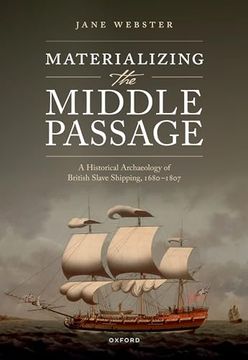Materializing the Middle Passage: A Historical Archaeology of British Slave Shipping, 1680-1807 (en Inglés)
Reseña del libro "Materializing the Middle Passage: A Historical Archaeology of British Slave Shipping, 1680-1807 (en Inglés)"
An estimated 2.7 million Africans made an enforced crossing of the Atlantic on British slave ships between c.1680 and 1807--a journey that has become known as the 'Middle Passage'. This book focuses on the slave ship itself. The slave ship is the largest artefact of the Transatlantic slave trade, but because so few examples of wrecked slaving vessels have been located at sea, it is rarely studied by archaeologists. Materializing the Middle Passage: A Historical Archaeology of British Slave Shipping,1680-1807 argues that there are other ways for archaeologists to materialize the slave ship. It employs a pioneering interdisciplinary methodology combining primary documentary sources, maritime and terrestrial archaeology, paintings, maritime and ethnographic museum collections, and many other sources to 'rebuild' British slaving vessels and to identify changes to them over time. The book then goes on to consider the reception of the slave ship and its trade goods in coastal West Africa, and details the range, and uses, of the many African resources (including ivory, gold, and live animals) entering Britain on returning slave ships. The third section of the book focuses on the Middle Passage experiences of both captives and crews and argues that greater attention needs to be paid to the coping mechanisms through which Africans survived, yet also challenged, their captive passage. Finally, Jane Webster asks why the African Middle Passage experience remains so elusive, even after decades of scholarship dedicated to uncovering it. She considers when, how, and why the crossing was remembered by 'saltwater' captives in the Caribbean and North America. The marriage of words and things attempted in this richly illustrated book is underpinned throughout by a theoretical perspective combining creolization and postcolonial theory, and by a central focus on the materiality of the slave ship and its regimes.

